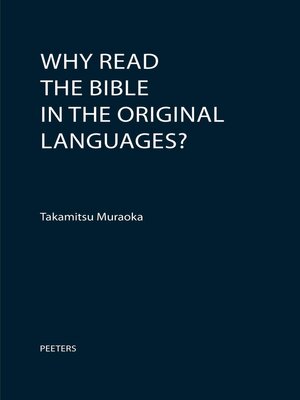
Sign up to save your library
With an OverDrive account, you can save your favorite libraries for at-a-glance information about availability. Find out more about OverDrive accounts.
Find this title in Libby, the library reading app by OverDrive.



Search for a digital library with this title
Title found at these libraries:
| Library Name | Distance |
|---|---|
| Loading... |
A comparison of multiple translations of the Bible in any language shows that they differ at hundreds of places, pointing to the continuing disagreement among Bible scholars and translators in their analysis and understanding of those places. To learn Hebrew, Aramaic, and Greek, the original languages of the Bible, is admittedly not everybody's cup of tea. Knowledge of them does not necessarily provide a solution to these difficulties. However, there are not a few things in the biblical text which can be missed out if it is read only in translation. A range of linguistic issues touching on the three original languages are discussed in the light of actual examples. Matters of culture and rhetoric are also taken up. A special chapter is devoted to the Septuagint as a bridge between the two Testaments. The book is written in a non-technical style, hence easily readable by non-specialists, but specialists may also find things of interest. No Hebrew or Greek alphabet is used.







